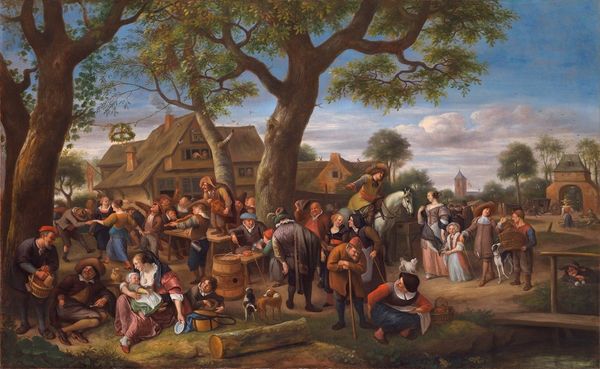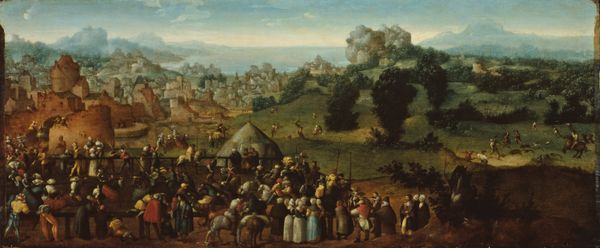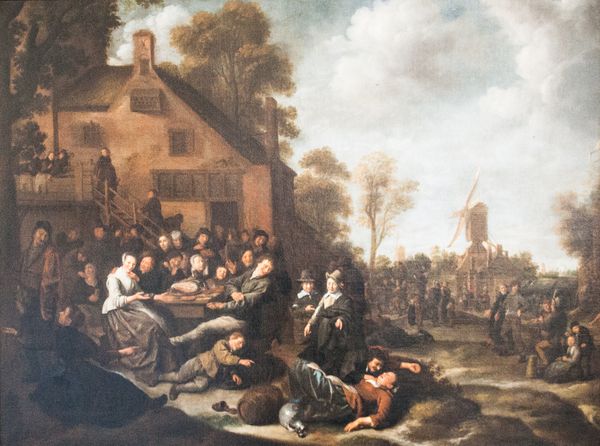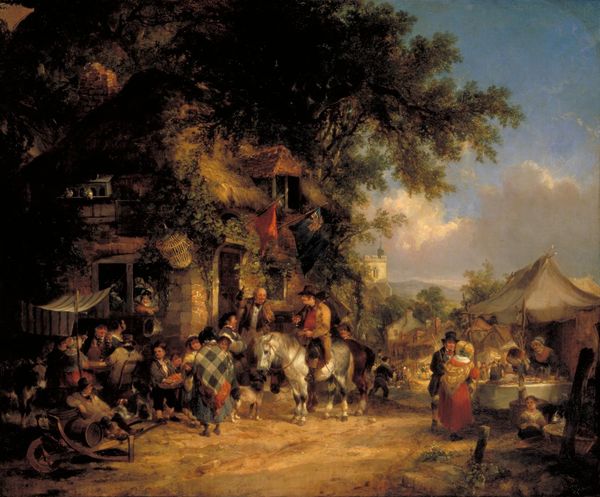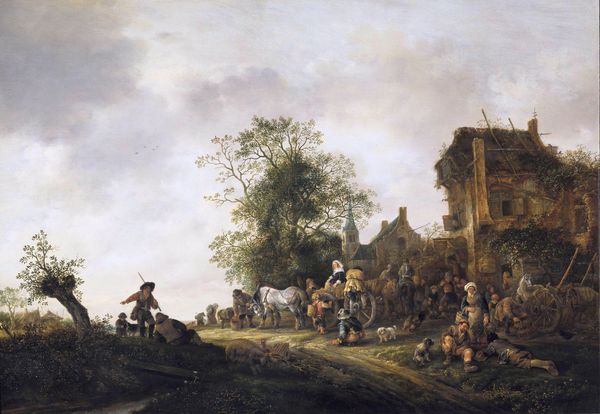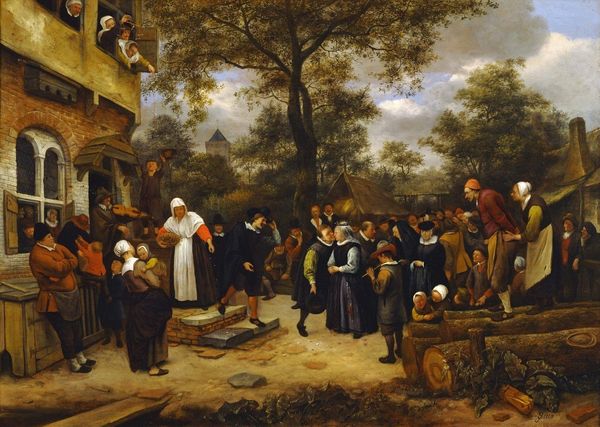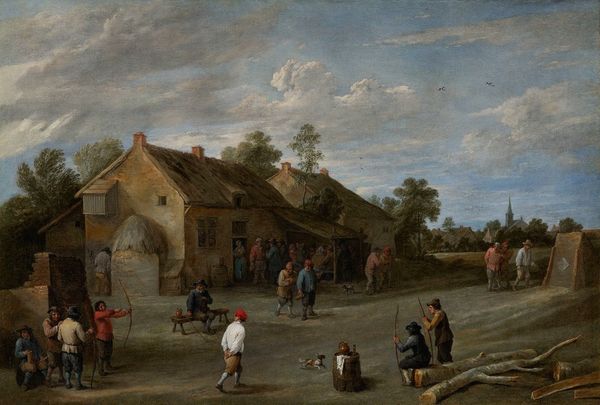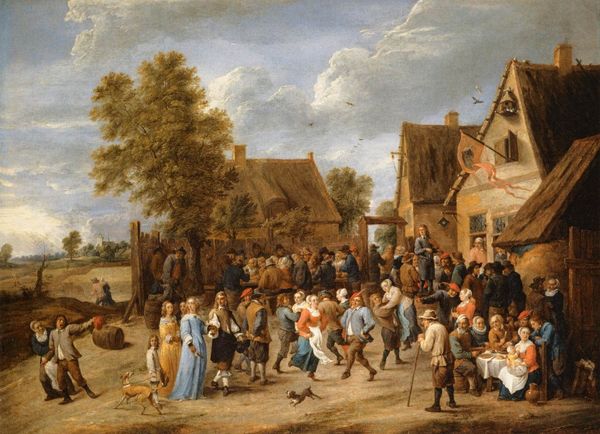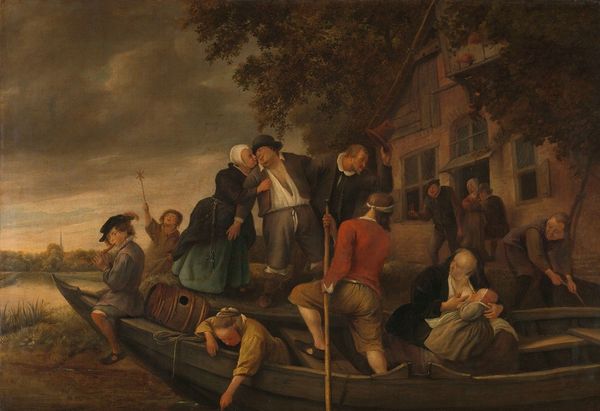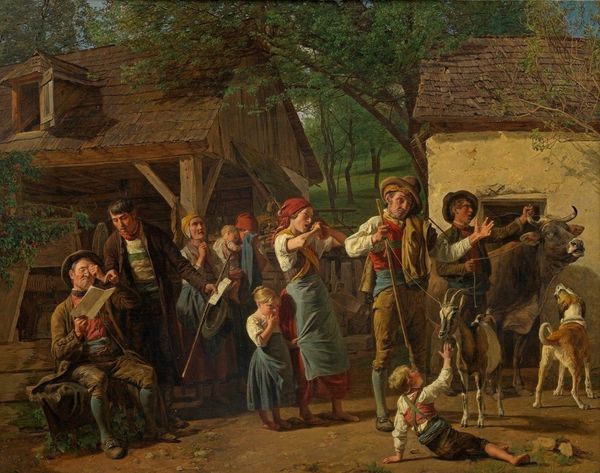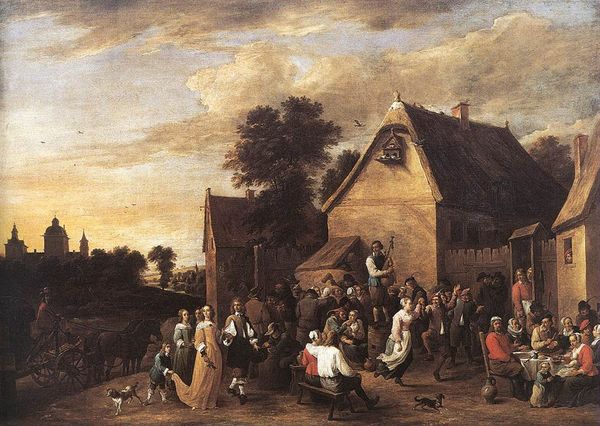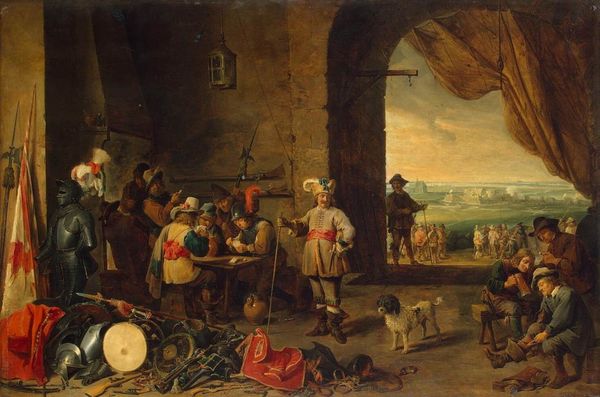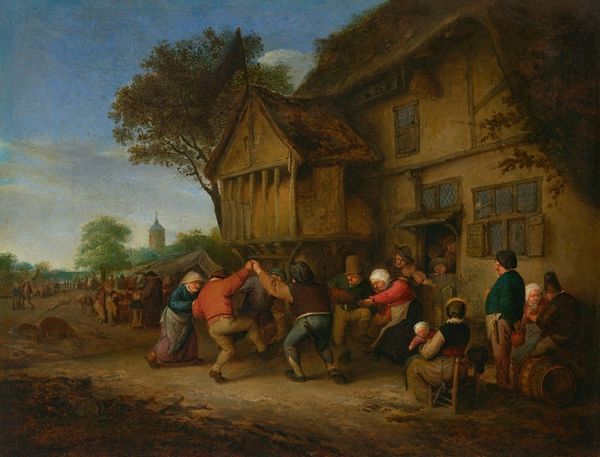
painting, oil-paint
#
narrative-art
#
baroque
#
dutch-golden-age
#
painting
#
oil-paint
#
landscape
#
figuration
#
oil painting
#
underpainting
#
group-portraits
#
painting painterly
#
genre-painting
Copyright: Public domain
Curator: My initial reaction is of utter chaos! It’s a scene of joyous pandemonium, reminiscent of a Breughel, but rendered with Jan Steen's signature… looseness. Editor: Yes, "A Village Revel," created by Jan Steen in 1673, encapsulates a vibrant scene of rural life. What's compelling is its context: consider the post-Golden Age Netherlands and its artistic production catering to a rising merchant class hungry for representations of their own evolving societal landscape. This demand directly impacted artistic output. Curator: Absolutely! The materiality reinforces this sense. It's oil on canvas, but look at how thickly Steen applies the paint in certain areas – the revelers’ clothes, the food being consumed – almost as if he wants to emphasize the textures of their lives, of their labor and leisure. Editor: Steen's skillful portrayal captures the mood of the time and acts almost as a social commentary on leisure and labor. Notice the way the tavern serves as a focal point. The artist seems to be inviting the audience to consider the influence of establishments like these on the lives of people from various classes. What were the conditions of their accessibility, who controlled these social hubs, and how did their rise impact local customs and societal expectations? Curator: The symbolism certainly points to indulgence – empty barrels, spilled food, the characters practically spilling out of the painting’s frame. One can almost smell the stale beer and unwashed bodies. This isn't about idealized beauty, but raw, tangible human existence. And look at how the brushstrokes animate them - capturing gestures and expressions with such liveliness. What type of labor allowed the making of such lively scenes to become profitable within the wider Dutch economy? What about pigment acquisition, paint milling? Editor: That reminds me, consider how the politics of imagery played a role. Were these scenes merely entertainment for the urban elite, a detached observation of rural "otherness", or was there also an element of identification? The growth of galleries and artistic patronage among Amsterdam's wealthy definitely shaped the themes and aesthetics present in works like this. The very fact that such scenes are commissioned tells us a great deal about the era's value system and the rising middle class that championed it. Curator: Precisely! The materials themselves, canvas woven and primed, paints meticulously crafted – these are commodities reflective of Dutch prosperity at the time, enabling Steen to translate his observations into a commodity that can be traded in the market of images. Editor: Studying the history of “A Village Revel”, one learns more about Steen’s time as well as the museum context we look at the painting through. How its status has shifted and settled as well. Curator: Exactly, a complex painting about the simple act of enjoyment.
Comments
No comments
Be the first to comment and join the conversation on the ultimate creative platform.
